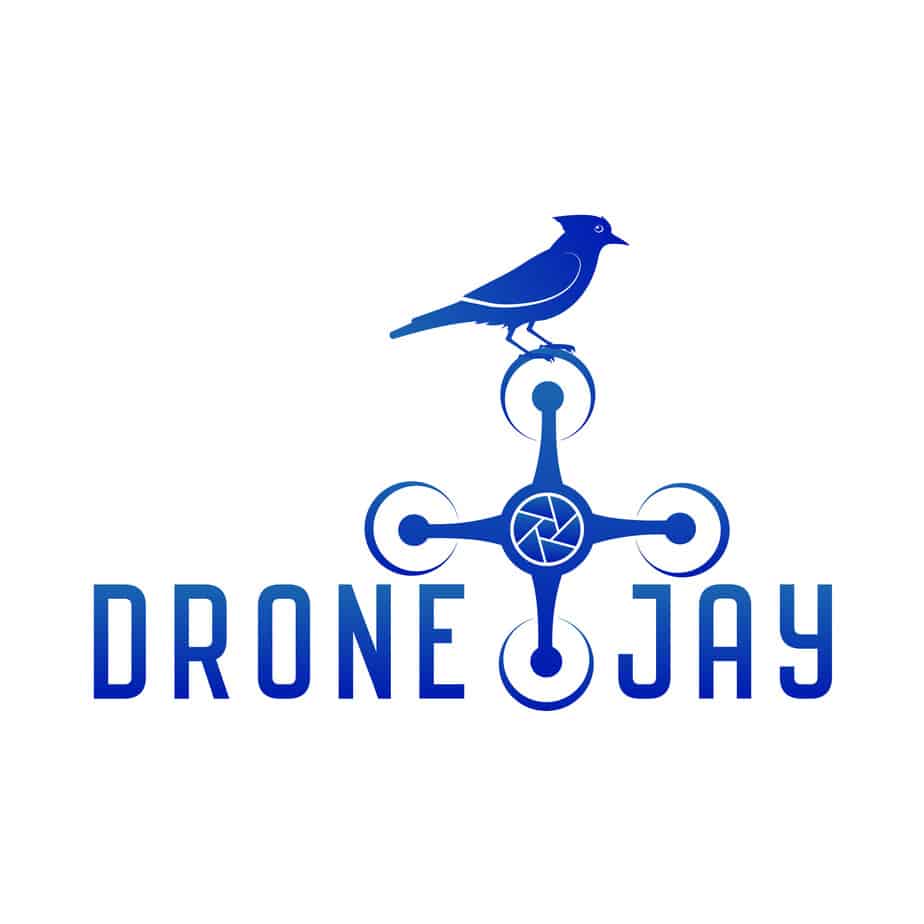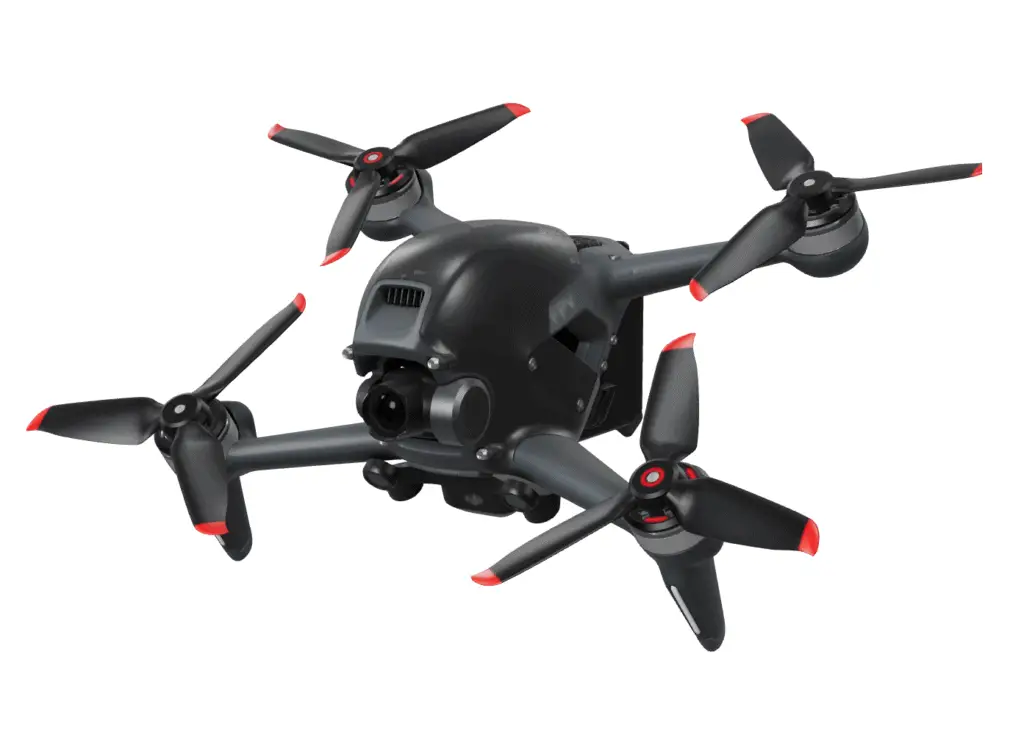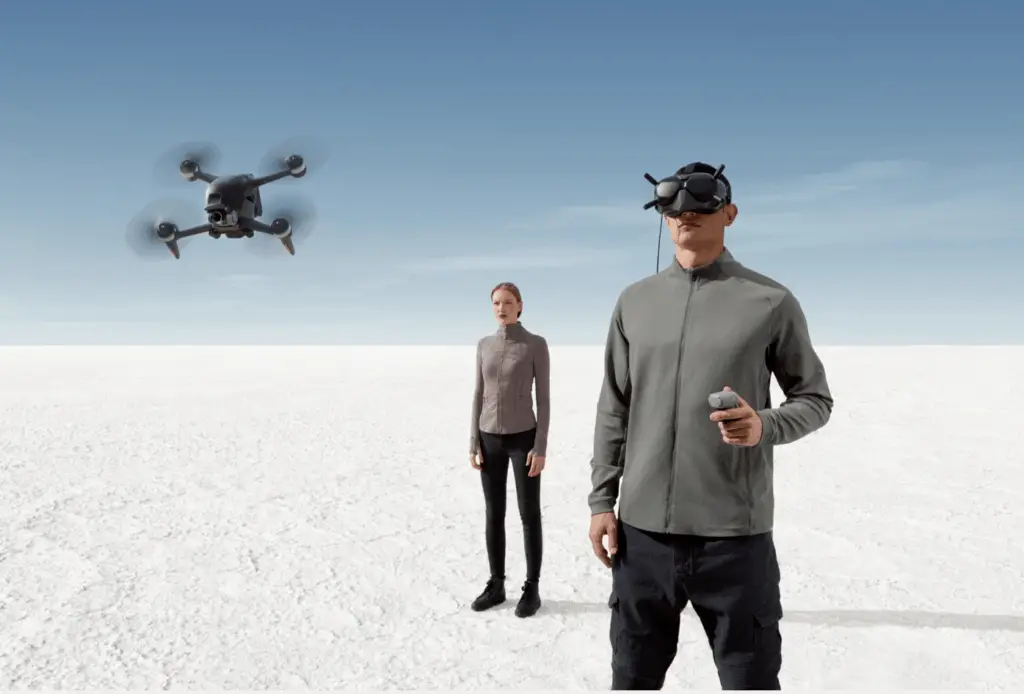The much-awaited new DJI FPV System has finally arrived and, judging by general consensus, it’s revolutionary! Does it truly up the ante in drone technology or is it just hype, though?
In this review, we cover all you need to know about the DJI FPV remote-controlled recreational drone system, so be sure to stick around.
Product Overview
If you’re an avid droner, you’ve probably heard of the Chinese drone manufacturer, DJI. The company was founded in 2006 and initiated the FPV movement by launching its first Goggles in 2016.
In 2017, they launched their first drone that can be controlled by hand gestures. Since then, they’ve come to control over 70% of the drone market.
Their products include drones used for aerial videography and photography. They also design and manufacture a wide range of products for aviation simulation and control systems.
Their newest invention is the first-person view (FPV) drone system. It promises hours of fun and fast flying. It’s designed for beginners and experienced FPV pilots alike
It’s all done with the help of DJI’s video goggles that come with the drone system. They give you a spectacular bird’s-eye view.
The FPV is a remarkable drone system, all in all, but compared to other models on the market, it doesn’t quite shine in terms of value for the money.
Specifications
- Sensor: 12MP, 1/2.3-inch CMOS
- Camera: 14.66mm equivalent lens with a 150-degree field of view
- Air unit weight and dimensions: 2 ounces; 2 x 1 x 0.5 inches
- Goggles: 15 ounces; 8 x 5 x 4 inches including antennas
- Battery: Lipo 2S 4920 mAh, 7.6V
- SD card: supporting Micro SD up to 128 GB capacity; slots on the drone and goggles
- Max speed: 87 mph
- Max flying time: 20 minutes
- Max altitude: 4 miles
Pros
- Better battery life compared with traditional FPV drone systems
- Impressive video capabilities
- Googles offer high-quality imagery
- Enhanced cooling system
- Ready-to-fly out of the box
Cons
- Doesn’t come with a carrying case
- The propellers can be quite noisy
- Pricey
Price and Warranty
The approximate price of the DJI FPV System is more expensive than other models, especially when you factor in all the essential accessories and gear.
The DJI warranty is valid for one year on all products. You can choose from two separate protection plans, called Care Refresh, that extend the original warranty from the date of purchase.
The first plan lasts one year and allows you to replace up to two parts. The second plan is for two years and allows you to replace up to three parts.
The FPV system consists of:
- FPV drone
- 2 sets of propellers
- V2 FPV Goggles
- Remote control
- AC charger
- Cables
- 1 spare canopy
- Adaptor cable
General Features
Read on to learn about some of the basic features of the new DJI FPV System.
Flying Modes
DJI designed this FPV drone system for all types of users; novice and experts alike. There are flying modes to suit all levels of FPV flying skills and abilities.
Normal Mode
N mode is what you should start with when you’re first trying the system. It makes use of the drone’s front and bottom visual position sensors. It also uses GPS positioning for more guided maneuvering.
When you release the controls in Normal mode, the drone will hover in position. This is a feature it shares with previous DJI drones.
The one drawback is that it doesn’t stop when the sensors detect anything in its path. It’ll only slow down and give you a warning. So, make sure you give yourself time to adjust your flight path to avoid collisions.
Other brands like the Mavic series can come to a complete stop when they detect something in their way. This avoidance feature acts as a safety mechanism.
Manual Mode
M mode is more suited for FPV pilots with more training and experience. It has no collision sensors and no GPS positioning system to guide you.
This mode is for pilots who like to perform aerial stunts through the air. Since the sensors are off, you can zip and zap as much as you like without having the sensors beep every few seconds.
While this mode is definitely not for the faint-hearted, it’s exhilarating if you know what you’re doing.
Sport Mode
The final mode is the S mode, which is a combination of both N and M modes. It’s designed to give you some latitude when flying just like the M mode. At the same time, you still get some of the safety features that are in N mode.
DJI Virtual Flight
This is an app simulator to give newbies a chance to test out their flying skills. You can use it indoors until you feel confident enough to try out the real thing outside.
Advanced Safety Features
Safety features include:
- Takeoff
- Pause Button
- Emergency Brake
- Landing Assistance
- Return to Home
Flying Speeds
The top speed on the DJI FPV can reach up to 87mph while flying in Manual mode. Even more impressive is that the drone can reach from 0 to 62mph in two seconds flat.
In Sport mode, the DJI FPV can reach speeds up to 60mph. The most modest speed is the Normal mode, which can reach up to 33mph.
Instant Playback
Videos are recorded and saved on the microSD card on the DJI FPV drone. Once saved, they can be instantly replayed through the integrated goggles.
You can view superb image quality with minimum latency within 28ms of recording. The two goggle screens offer remarkable HD resolution to capture stunning, crystal-clear aerial views.
Special Features
This section is all about the special features of the DJI FPV system. Keep reading to find out what sets this drone apart from the competition.
High-Tech Goggles
The digital V2 Goggles are high-performance, especially when compared with standard analog FPV goggles.
They even come with an adaptor cable that allows you to connect the goggles with your phone. Download the DJI FLY app and you get to see what the pilot sees.
These goggles are comfortable and lightweight. They feature high-tech accessories, like multi-antenna technology, two 2-inch screens, and channel adjustment buttons.
In addition, they’re equipped with a low-latency transmission mode, which ranges between 7ms and 28ms.
The latency depends on the transmission range, which can reach up to 2 miles, thanks to DJI’s proprietary OcuSync technology.
Their high-quality live view mode is at 720p resolution at a 60fps frame rate. Both modes support the following video play formats:
- MP4
- MOV
- MKV
Integrated Remote Controller
Boasting two adjustable control sticks, the remote controller features an ergonomic design. It’s comfortable, durable, and weighs a mere 27 ounces.
Best of all, this controller has a low-latency and powerful controller response. This allows users to fly with enhanced adeptness and skill. Plus, it allows for better image stabilization.
Moreover, the two antennas act as receivers and transmitters. They help ensure a broader signal coverage for fast and reliable transmission.
The controller has a USB-C port, as well as a 3.5mm audio interface port.
Filming Capabilities
The DJI FPV camera features a 150-degree angle lens for an ultra-wide field-of-view. The rolling shutter camera offers high image quality in Standard and D-Cinelike color profiles at a bitrate of up to 120Mbps.
This innovative piece of tech can shoot smooth, steady videos in 4K at 50/60fps. It features RockSteady Electronic Image Stabilization, as well as anti-vibration and damping mechanisms.
One of its unique features is it can shoot images up to 4x in slow motion. You can also adjust features, such as saturation and screen brightness.
One possible drawback is it performs quite poorly in cloudy or dark environments. You may notice some noise and muddied details in your footage.
Filming can be done in three modes: low-latency, smooth, or audience mode.
Low-Latency Mode
The lowest latency is within 28ms, as long as you’re flying the drone in a wide area with minimal electromagnetic interference. This mode provides an image quality of 720p/120fps.
Smooth Mode
Smooth mode boosts the frame rate of images to reach up to 720p/120fps, similar to that of low-latency mode. It’s in the quality of the video where this filming mode truly shines, though, reaching up to 1080p/60fps.
Audience Mode
The audience mode connects up to eight goggles to one single view. The footage is shot with the in-built image stabilizer camera.
The way it works is through its eight frequency channels. They allow up to eight drones to fly at the same time, with each having its exclusive channel.
Final Verdict
The new DJI FPV System combines the best type of technology for a hybrid drone. What you need to know is that this drone system can do everything from hovering to aerial stunts and acrobats.
The high-performance gear on this drone makes it accessible for beginners. At the same time, it provides the ultimate flying experience for trained pilots. This drone system is all about high-tech gear and well-built equipment for fun and fast flying. If this is something you want to check out feel free to use this link here to buy directly from DJI…
Or click the image below if you want to buy from Amazon! These are affiliate links and really helps support me and the website at no cost to you! Thanks!





